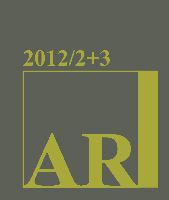Dry wall Kras 2011
Suhi zid na Krasu 2011
Author(s): Domen ZupančičSubject(s): Architecture
Published by: Fakulteta za arhitekturo, Univerza v Ljubljani
Summary/Abstract: Despite the modesty of hiska, they show a simple understanding of corbelling technique. One could say they are all examples of human landscape cultivation. Although there is no evident common line when comparing all types of hiska, the cunning eye may observe one shared feature: the positioning of the entrance. More or less all the documented shelters have south or southwestern facing entrances. The burja is a cold northerly wind; from the south (Adriatic Sea) the winds are warmer. When resting, the setting sun is taken as a sign of the ending of the working day and a reward for the whole day’s efforts. Entrances are the only openings to these structures, and they should serve as well as possible - to watch over the crops, to wait when hunting, to enjoy the calm of evening light, to breathe the sea wind. The syntax of the architectural language of layering stone and shaping the pattern of the landscape remain an inventive realisation of spatial ideas from the past until today. Not only ideas of shaping space - these ideas are basic interventions in the natural habitat which contribute to survival. Culture and an awareness of its values are the origins of local development and reasonable heritage preservation. The next step are tutorial days with workshops on how to build dry stone structures, walls and other stone architecture, as the DSWA organisation in the UK is doing.
Journal: AR Arhitektura, raziskave
- Issue Year: 2012
- Issue No: 2-3
- Page Range: 80-83
- Page Count: 4
- Language: Slovenian

